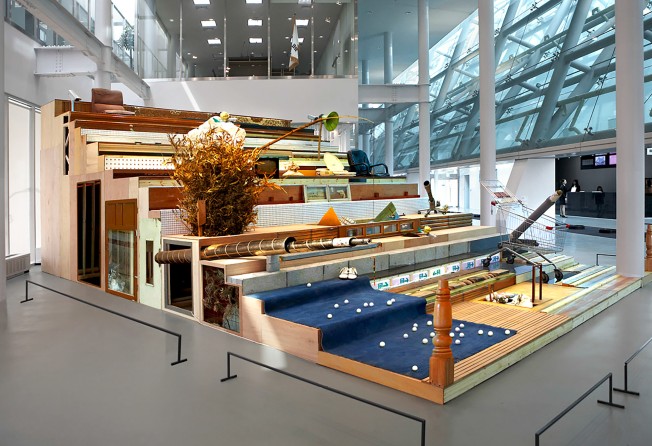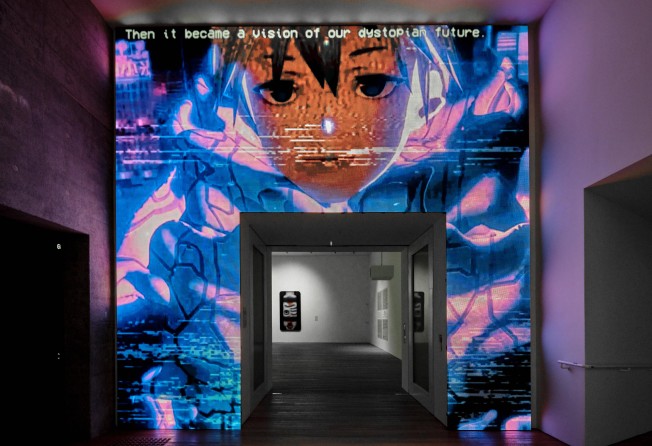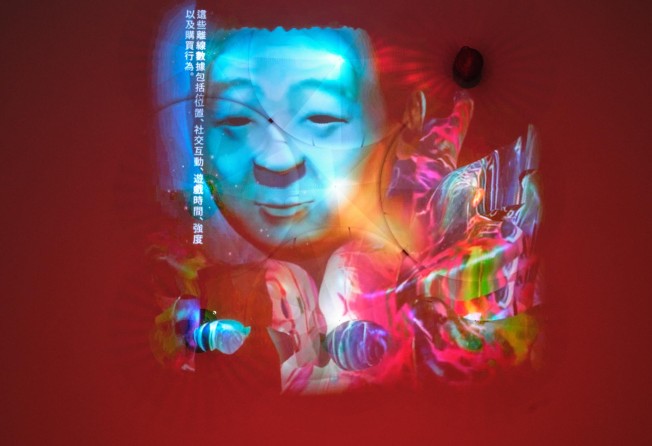
A president’s stolen rubbish changed their lives: artist duo on connecting with a Korean artist’s sculpture and naming their daughter after it
- Hong Kong-based artist duo and couple Zheng Mahler say that Kyungah Ham’s The Odessa Stairs – a sculpture made from salvaged waste – changed their lives
- The giant sculpture of a set of wooden steps was made using materials left outside the residence of controversial former South Korean president Roh Tae-woo

South Korean artist Kyungah Ham’s The Odessa Stairs (2007) is a giant sculpture consisting of a garishly decorated set of wooden steps, made using materials including furniture, a tree, a bidet, a television, golf shoes and a shopping trolley that were scavenged from waste left outside the residence of controversial former South Korean president Roh Tae-woo.
Hong Kong-based artist duo and couple Zheng Mahler, real names Daisy Bisenieks and Royce Ng, tell Richard Lord how it changed their lives.
Daisy Bisenieks: “We were living in Korea before we came to Hong Kong. This was about 10 years ago. We met Kyungah in 2008 or 2009, when Royce was doing an artist residency in Seoul.”
Royce Ng: “It was a programme through the National Museum of Modern and Contemporary Art in Seoul. It was a three-month residency in winter, the weather was brutal and all of the artists were locked inside for three months. She was in her 40s and better known than the rest of us.

“Meeting Kyungah changed me. I had dual interests in history and politics and in art, separately. I studied art history, and to me art was beautiful things; the two subjects were opposite poles. Meeting Kyungah was a revelation.
“I’d always thought, at artist talks, how do you talk about your art and not quickly exhaust your vocabulary? But then she went up for two hours and just talked about her entire process.
“I realised her life and work were inextricably intertwined. We became great friends with her, talking about art and learning from her.
“Through a series of unintended scenarios, I was invited to participate in the Busan Biennale [in 2012]. It was where Kyungah presented The Odessa Stairs. It’s an incredibly monumental piece: a staircase constructed from scrap wood.”
Bisenieks: “There are all these items on it: chairs, a loudspeaker, shoes – all these domestic items, plus a shopping cart. They were all collected from this president who cracked down on the Gwangju democracy movement.”
Ng: “She went in and stole all his rubbish, basically.”

Bisenieks: “It made a really big impression on her, the weight of all these histories. It spoke to our interests and an approach we really respected and could identify with. It influenced our approach as creators.
“I like that these objects are not what you’d usually associate with people in power. It exposes the banality of this once powerful figure who caused so much harm. It’s quite beautiful.
“We moved to Hong Kong because we’re interested in exploring the cultural relations of Asia and Africa. We started conducting research in Chungking Mansions [in Tsim Sha Tsui, Kowloon] with African traders and refugees.
“We befriended a Somali businessman who had a side business of trading abalone with China. When we were asked to do an exhibition, we diverted two tonnes of abalone shells to Hong Kong for it.”

Ng: “There was a connection to The Odessa Stairs. It was on a monumental scale but there was something innately ridiculous about it. In the same way as Kyungah, it was a very visceral reminder to the gallery and the audience: you’re part of this value chain. It physically connected people to something unseen.”
Bisenieks: “When we first saw The Odessa Stairs, we both had an interesting moment. We thought: “If we ever have a daughter …”
“Then our daughter, Odessa, was born in 2017. She’s always been there in some way.”